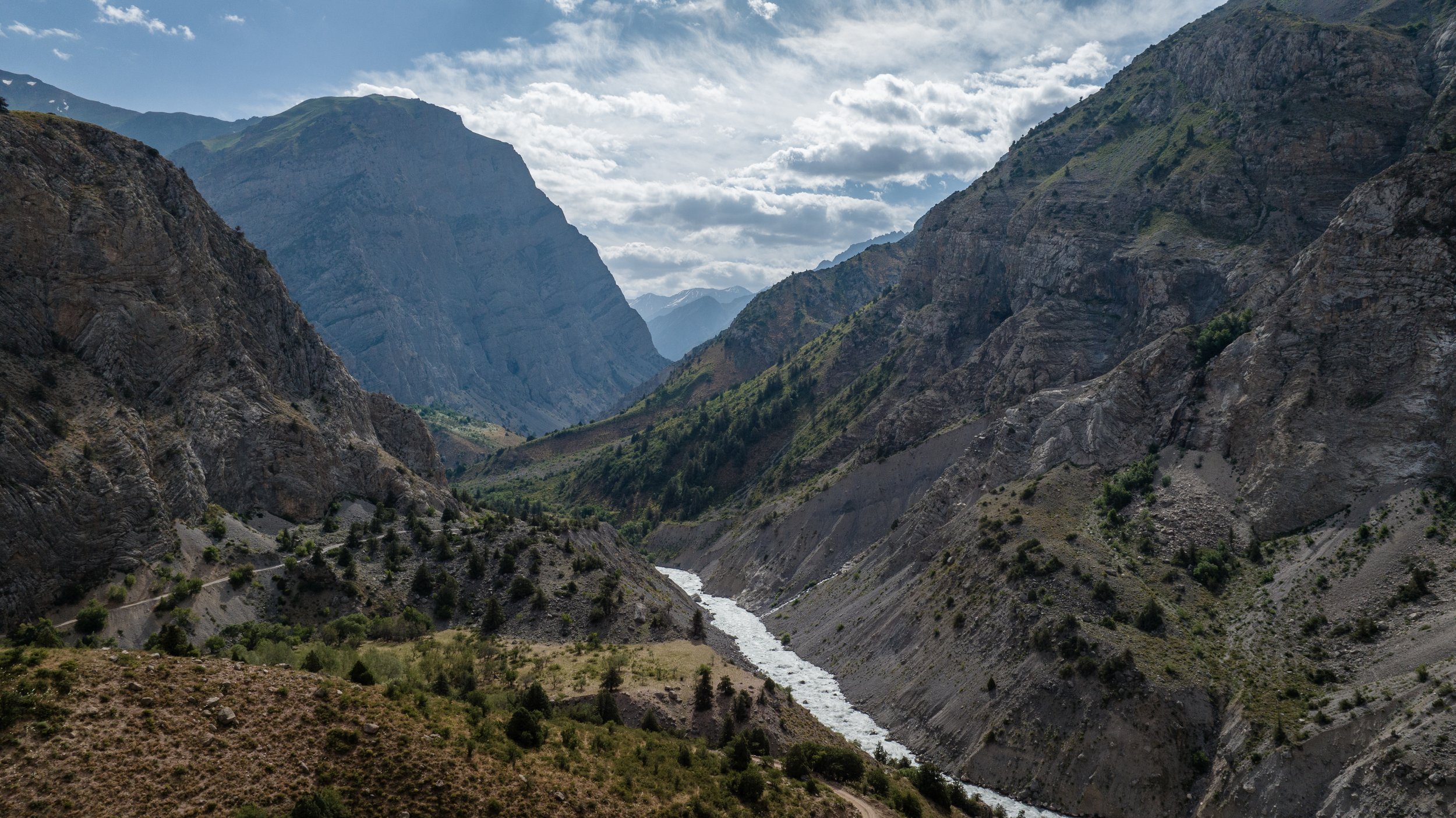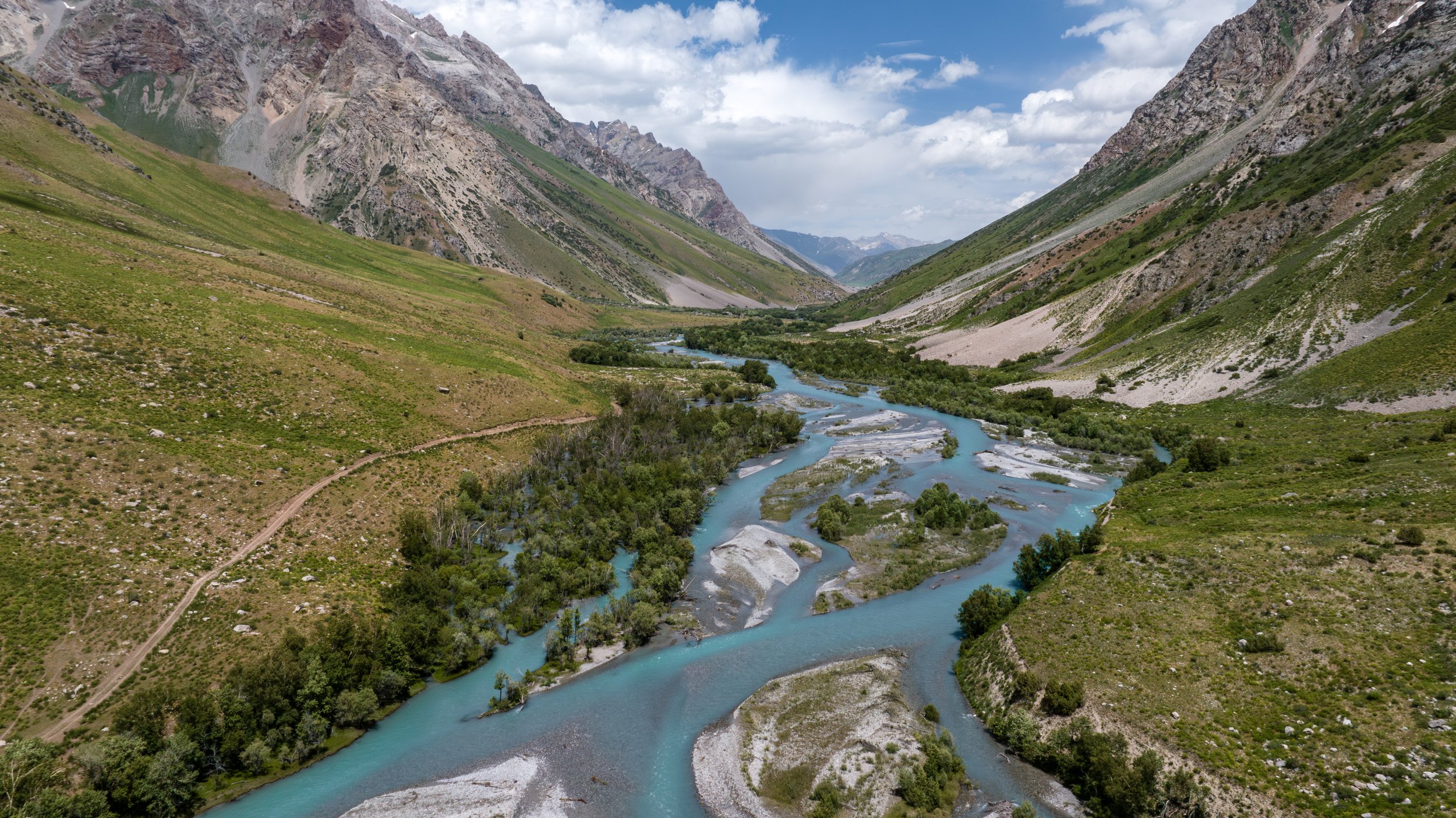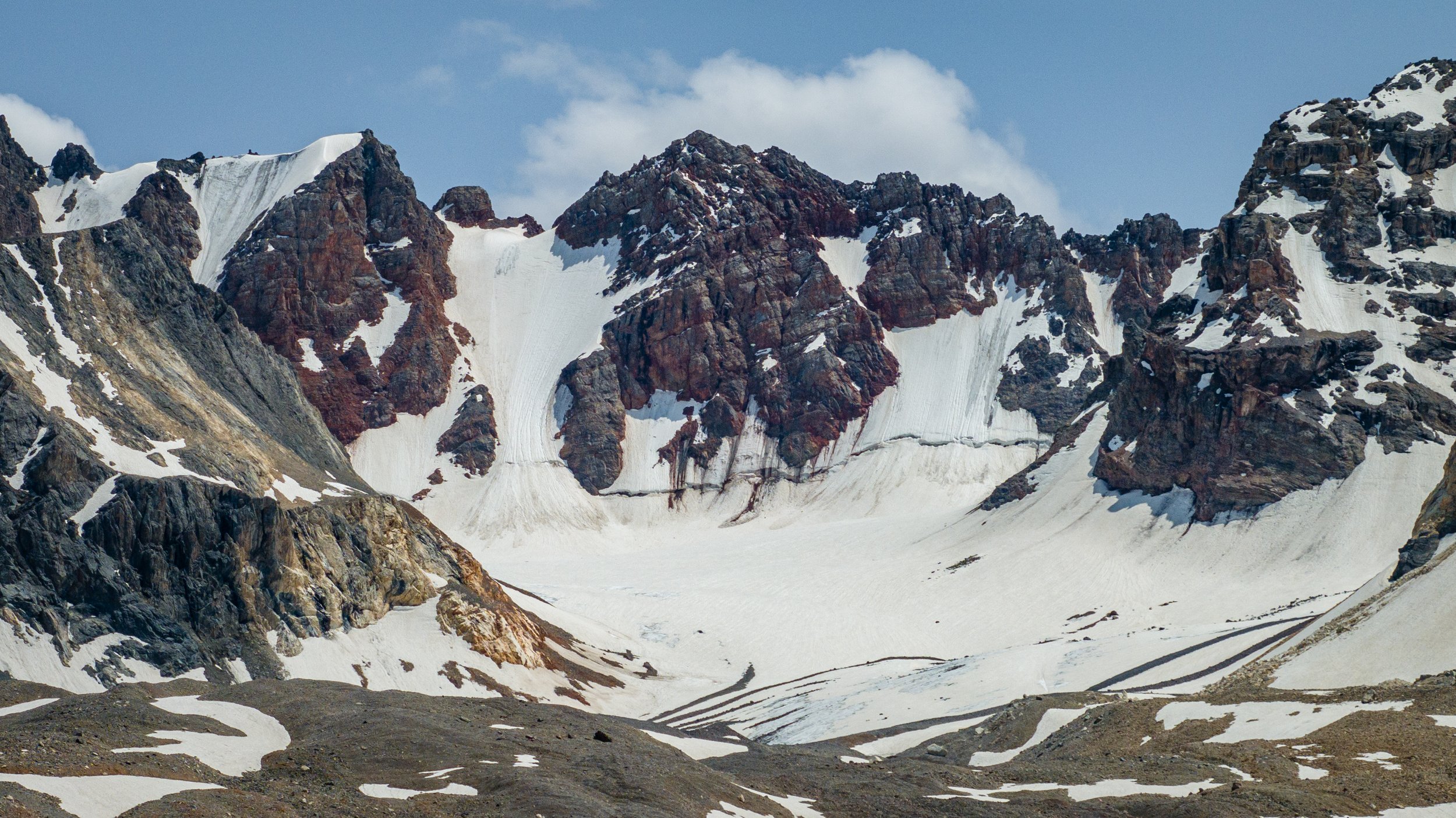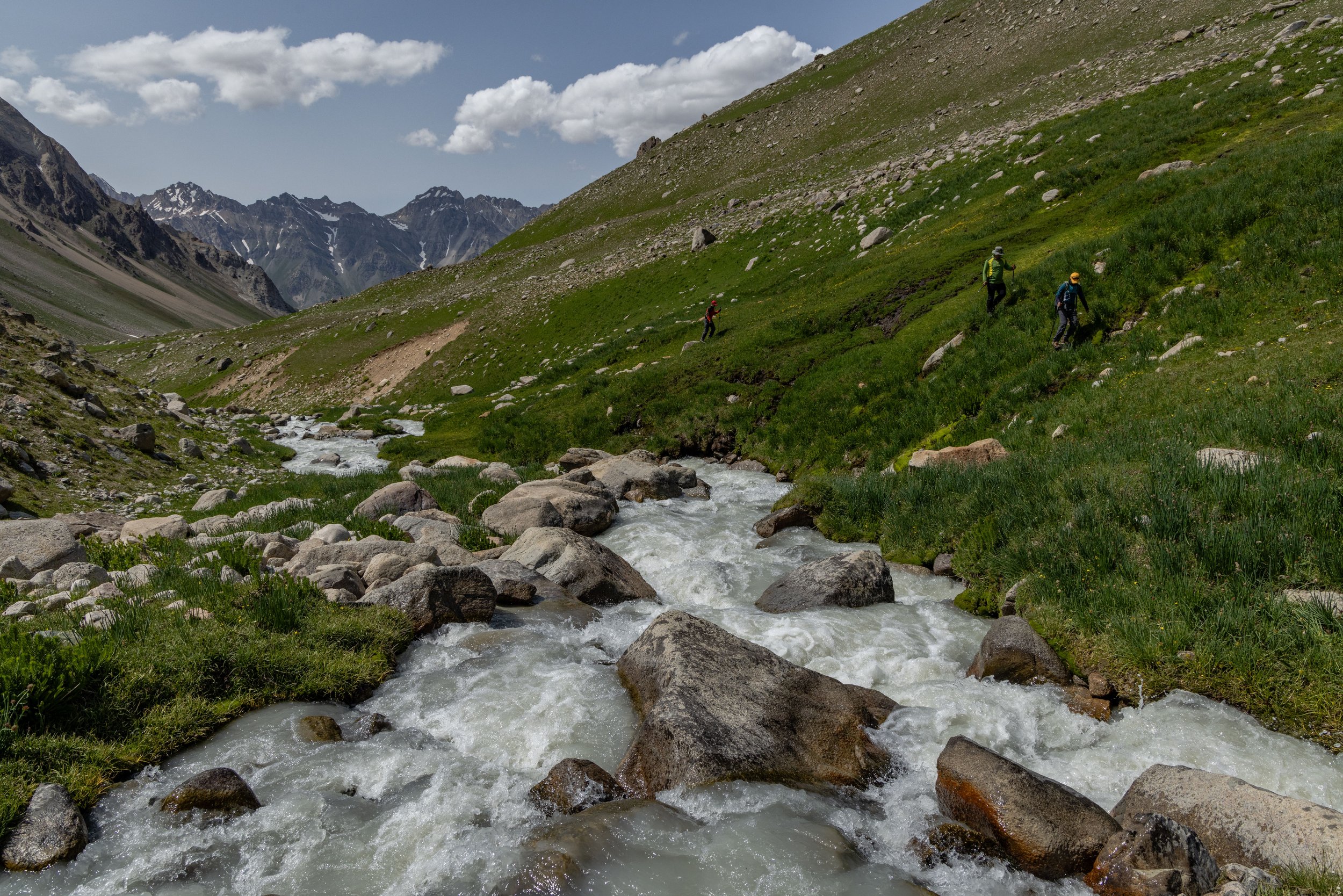Exploring the Oygang river
The Oygaing is a mountain river in the Bostanlyk district of Tashkent region; it is the left tributary of the Pskem river. Marat Nadjibaev shares his experience of reaching this almost unreachable destination.
Text: Umida Qodirova
Photos: Marat Nadjibaev
How do you plan your trips? Do you make any specific preparations?
When it comes to planning my trips, I start well in advance. Towards the end of the year, I create a list of all the places I would like to visit the following year and note down the ideal season to go. This list is usually quite extensive. Then I keep an eye on the holiday periods in Uzbekistan, when I can take advantage of the time off. For example, Hayit is celebrated twice a year. I mark those dates on my calendar, as they usually provide a 3- to 5-day break, depending on the day of the week. This opens up an opportunity to explore a more remote destination.
If someone wants to join you on a trip, what criteria do you consider? Any recommendations for those who might not meet the requirements?
Within a couple of months, I start assembling a team for the trip. The size of the team depends on the nature of the adventure. If it's a simple trip or an easy hike, I can accommodate many people. However, if it involves a challenging climb or a tough route, I select individuals who are physically fit and experienced. For those who aren't suitable, I recommend considering commercial projects like "Mysterious Uzbekistan", where they can enjoy a guided experience.
For trips that involve hiking in Oygaing, I look for individuals with prior hiking experience and the necessary equipment, such as a backpack and sleeping gear. The temperature difference in Oygaing can be significant, ranging from 30+ degrees Celsius during the day to near or even below freezing at night. Oygaing always remains on my list of destinations each year, especially during longer holiday periods. A mere two days off is not sufficient to fully appreciate all that Oygaing has to offer. With three to five days or more, it becomes a more comfortable experience, allowing you to explore and witness the many attractions of the area.
What do you take with you on such trips?
To ensure a smooth and enjoyable trip, make sure to pack two sets of clothing: lightweight attire for afternoon walks and warmer gear for chilly nights. Don't forget essentials like a tent, cosy bedding, personal items, and a well-stocked medical kit. Oh, and don't forget sunscreen to protect you against sunburn!
When is the best time to visit? How many days did your trip last?
Trips to Oygaing are best planned between June 20th and September 20th. Beware, though, as winter arrives early, blanketing the landscape with up to 2 metres of snow. During early spring and late autumn, the road can be damaged due to rainfall, adding an extra element of challenge. Picture yourself traversing a picturesque wilderness, navigating through rugged terrain and untamed shrubbery. Be prepared for thrilling climbs where paths may be scarce. Cross rivers, face unexpected obstacles, and experience the true essence of adventure.
Now let's delve into the itinerary. I meticulously planned my five-day journey, ensuring each day offered a unique exploration. The afternoon of the first day served as a much-needed rest after a long road trip. On the second day, we undertook a thrilling march towards the breath-taking Barkrak glacier, situated at an altitude of 3000+ metres. Keep an eye on the climate, as it can be quite unpredictable at these elevations.
For the daredevils in the group, the third day provided an opportunity to conquer the summit of Adelunga, standing tall at an awe-inspiring 4000+ meters. Meanwhile, another group veered off to explore the remnants of the old road, assessing the possibility of continuing the journey.
On the fourth day, we were amazed by the beauty of several lakes along the Coxa river and especially the pristine Termetash and Karakush lakes; their serenity really captivated our senses.
As the fifth day dawned, it was time to bid farewell to this wondrous land. We embarked on a memorable return trip, reminiscing about the extraordinary experiences and unforgettable memories made. Remember to embrace the spirit of adventure, be prepared for the unexpected, and cherish every moment of this extraordinary journey.
How did you get there?
We took two SUVs on the trip. The road is suitable only for SUVs; sedans will not pass there. With the car, you can get to the weather station and set up camp nearby, or, as we did, closer to the glacier. The glacier was about 10 km on foot. To the lakes, 15–16 km.
Please tell us more about the location, such as flora and fauna. What makes it worth visiting?
Oygaing is a unique place in our country, and the fact that it’s located in the Tashkent region makes it close enough to visit. The word "Oygaing" comes from the Uzbek oq qayin, meaning “white berry”, because it's the only place where cancer grows. There are many mountain flowers along the way; all of them are beautiful, but it is better not to touch them with your hands, as some of them are poisonous and can cause skin allergies. If you’re lucky you might see bears, mountain goats, or red book caterpillars; overhead you might spot an eagle or a griff; and at night you can hear a whistle. The territory is high and mountainous, and only a few species of animals and plants can survive there.
All in all, this place is unique and must be protected from mass tourism. It is precisely the proximity to the border that saves this place. To get to Oygaing, you have to get permission from the border guards.
Tell us which locations you visited and what surprised you the most.
The main objectives were the Barkrak glacier, the nearby Adelunga peak (4,302 m) for the climbers in the group, the lakes on the river Cox, and two lakes of the collapsed type: Termetash and Karakush. And on the way one can admire the valley of the Oygaing river, see the beginning of the river Pskem (which feeds into Charvak Reservoir) and the Karangitugan plateau.
To see a real glacier for the first time was my goal for a long time. Glaciers are not easy to reach in Uzbekistan, and Barkrak is one of them. The place is harsh, beautiful and dangerous. This is where life is born, where pure water comes from.
The lakes surprise with their palette of colours; in the morning, they are bright green spots of nephrite. Their water is never warmer than 8 degrees Celsius; at night, their surface often freezes over. And the peaks are all around. There is total silence; you can only hear the wind. You can sit next to the beach, take a nap and meditate. And while you’re driving back, you feel like you have to stop 20 times to capture the beauty of Oygaing on camera.
You'd be surprised at how fast the weather can change there. You can be driving in the rain, then there’s a beautiful dawn after it, in the afternoon the sun burns you, and in the evening there are clouds again and a colourful sunset, and then you escape at night to the warmth of your tent.
What difficulties did you encounter during your journey? How many of you joined the trip?
During our journey we faced many challenges that put our skills and resilience to the test. As a driver, the most daunting task was navigating 150 kilometres of treacherous terrain. Picture this: no roads, just rivers to cross and imposing rocks obstructing our path. The return journey proved even more daunting when we realized the river meter had broken loose from the car, forcing us into a frantic two-hour search. Miraculously, we found the elusive meter, or what was left of it. In some sections, we resorted to driving without passengers to prevent tire damage. We carried cans of extra fuel since there were no refuelling stations for long stretches.
Our expedition consisted of two crews, each comprising five individuals, along with our skilled driver. Those brave enough to ascend the majestic peak of Adelunga had to endure a bone-chilling night below freezing temperatures on Barkrak glacier. Rising before daybreak, the four intrepid climbers started the ascent, determined to conquer the summit and return before darkness. Exhaustion weighed heavily on the boys, and one climber’s shoes fell apart on the demanding terrain. Thankfully, we had carried spare gear to ensure everyone’s safety. Nature has a way of reminding us of its presence as we were mercilessly attacked by small ticks, who usually have a preference for animals but somehow found a way through our clothes. The sun was relentless, leaving one unfortunate individual with a serious sunburn on the glacier. Moreover, the glacier water had a harsh effect on our skin, causing excessive dryness and roughening our hands.
Despite the hardships we encountered, the allure of the wild, the adventure and the bonds formed amidst adversity made every struggle worthwhile. It's moments like these that define a journey, creating unforgettable memories that last a lifetime.
What would you advise a reader who wishes to visit this place?
Seek permission and prepare for isolation. To reach Oygaing, it is essential to obtain permission from the border guards. Additionally, be prepared for complete isolation, as the nearest village is located 80 km away.
Embrace the ruggedness. Oygaing is a place where comfort takes a back seat to adventure. Accept the lack of complete comfort as part of the experience, as it adds to the raw and untamed nature of the surroundings.
Financial readiness. It's important to have the financial capacity for the journey, as the road to Oygaing can be expensive.
Preserve its untouched nature. As you explore Oygaing, I encourage you to appreciate and respect its pristine beauty. Let's all play our part in preserving this magnificent place for future generations to enjoy.
Safe travels and may your adventure to Oigaying be unforgettable!











